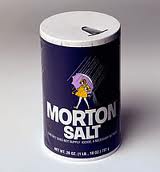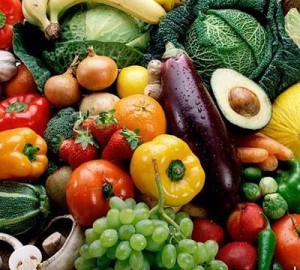Abstract:
The Dietary Approaches to Stop Hypertension (DASH) diet is a widely recognized dietary pattern designed to lower blood pressure and promote cardiovascular health. I will attempt to provide an in-depth review of the DASH diet, its origins, key principles, health benefits, and potential limitations. It also explores the scientific evidence supporting its efficacy and applicability in various populations. Furthermore, this paper discusses practical considerations for adopting the DASH diet and its potential future developments in the field of nutrition and health.
1. Introduction
The DASH diet, or Dietary Approaches to Stop Hypertension, is a dietary plan primarily developed to combat hypertension (high blood pressure). DASH has since gained recognition for its broader health benefits. Hypertension is a major risk factor for cardiovascular diseases, including heart disease and stroke. Therefore, the DASH diet is essential to reducing these health risks.
2. Origins and Development
The National Heart Lung and Blood Institute (NHLBI) developed the DASH diet in a study known as the DASH-Sodium Study. The primary objective of the DASH-Sodium study was to investigate the effect of dietary patterns on blood pressure, in particular, the effects of sodium intake. Researchers aimed to design a diet that could effectively lower blood pressure without medication. The DASH diet emerged from this study as a dietary pattern rich in nutrients and low in sodium, saturated fat, and cholesterol.
3. Key Principles of the DASH Diet
The DASH diet emphasizes the consumption of nutrient-rich foods while limiting the intake of sodium, saturated fats, and cholesterol. Key principles of the DASH diet include:
- High Consumption of Fruits and Vegetables: The diet encourages individuals to consume a variety of fruits and vegetables, providing essential vitamins, minerals, fiber, and antioxidants.
- Lean Protein Sources: Lean proteins like poultry, fish, and plant-based options such as beans, lentils, and tofu are recommended to replace high-fat animal proteins.
- Whole Grains: The DASH diet emphasizes whole grains like brown rice, whole wheat, oats, and quinoa, which are rich in fiber and nutrients.
- Dairy: Low-fat or fat-free dairy products are included to provide calcium and protein without excess saturated fat.
- Nuts, Seeds, and Legumes: These foods are encouraged as sources of healthy fats, fiber, and plant-based protein.
- Limited Sweets and Sugary Beverages: The DASH diet restricts the consumption of sugary foods and beverages, reducing the intake of added sugars.
- Sodium Restriction: The diet recommends limiting sodium intake to 2,300 milligrams per day (or 1,500 milligrams for individuals with hypertension, certain chronic conditions, or those at high risk).
4. Health Benefits of the DASH Diet
The DASH diet offers a range of health benefits beyond blood pressure reduction:
- Lowering Blood Pressure: Numerous studies have shown that the DASH diet can effectively lower blood pressure, particularly in individuals with hypertension.
- Cardiovascular Health: The diet is associated with a reduced risk of heart disease, stroke, and other cardiovascular conditions due to its focus on heart-healthy nutrients and reduced saturated fat intake.
- Weight Management: The DASH diet can help weight loss and weight management due to its emphasis on nutrient-dense, low-calorie foods.
- Improved Lipid Profile: The diet can lower levels of LDL cholesterol (bad cholesterol) and improve HDL cholesterol (good cholesterol), further reducing the risk of heart disease.
- Diabetes Management: The DASH diet may help individuals with diabetes manage blood sugar levels, as it encourages a balanced intake of carbohydrates, fiber, and protein
5. Scientific Evidence
The effectiveness of the DASH diet has been supported by numerous clinical trials and epidemiological studies. For instance, the original DASH-Sodium trial demonstrated that the DASH diet could significantly lower blood pressure, with greater reductions observed when combined with sodium restriction. Subsequent research has reaffirmed these findings, highlighting the positive impact of the diet on cardiovascular health and well-being.
This was one of the few studies in which all the food was made for the participants.
6. Applicability and Limitations
While the DASH diet offers substantial health benefits, it may have limitations for some. Its emphasis on whole foods and fresh produce can be costlier and less convenient than processed alternatives. Cultural preferences and dietary restrictions may also pose challenges in adopting the DASH diet. Nevertheless, modifications and adaptations can be made to suit individual needs and preferences while maintaining the core principles of the diet.
7. Practical Considerations
For those interested in adopting the DASH diet, practical considerations include meal planning, grocery shopping, and monitoring sodium intake. Consulting with a healthcare professional or registered dietitian can provide personalized guidance and support.
8. Future Developments
The DASH diet continues to evolve as new research emerges in nutrition and health. Future developments may focus on tailoring the diet to specific populations, incorporating technological advancements, and exploring the impact of the DASH diet on additional health outcomes beyond hypertension.
It is America’s Mediterranean Diet
DASH is a version of the Mediterranean Diet. You can see the same requirements for whole grains, vegetables, fruits, dairy, and legumes. It combines meats and fish depending on the calories and still uses primarily monounsaturated fats. There is no recommendation for or against alcohol in this diet. There is a strong recommendation to decrease sodium in the diet.
9. Conclusion
The DASH diet is a well-established dietary pattern with proven benefits for lowering blood pressure and improving cardiovascular health. Its emphasis on nutrient-rich foods, balanced nutrition, and sodium restriction makes it a valuable tool for reducing the risk of hypertension and related health conditions. While challenges may exist in adopting the DASH diet, its adaptability and potential for customization make it a practical and effective choice for individuals seeking to improve their dietary habits and well-being.
DASH Eating Plan—Number of Food Servings by Calorie Level
| Food Group | 1,200 Cal. |
1,400 Cal. |
1,600 Cal. |
1,800 Cal. |
2,000 Cal. |
2,600 Cal. |
3,100 Cal. |
| Grainsa | 4–5 | 5–6 | 6 | 6 | 6–8 | 10–11 | 12–13 |
| Vegetables | 3–4 | 3–4 | 3–4 | 4–5 | 4–5 | 5–6 | 6 |
| Fruits | 3–4 | 4 | 4 | 4–5 | 4–5 | 5–6 | 6 |
| Fat-free or low-fat dairy productsb | 2–3 | 2–3 | 2–3 | 2–3 | 2–3 | 3 | 3–4 |
| Lean meats, poultry, and fish | 3 or less | 3–4 or less | 3–4 or less | 6 or less | 6 or less | 6 or less | 6–9 |
| Nuts, seeds, and legumes | 3 per week | 3 per week | 3–4 per week | 4 per week | 4–5 per week | 1 | 1 |
| Fats and oilsc | 1 | 1 | 2 | 2–3 | 2–3 | 3 | 4 |
| Sweets and added sugars | 3 or less per week | 3 or less per week | 3 or less per week | 5 or less per week | 5 or less per week | ≤2 | ≤2 |
| Maximum sodium limitd | 2,300 mg/day | 2,300 mg/day | 2,300 mg/day | 2,300 mg/day | 2,300 mg/day | 2,300 mg/day | 2,300 mg/day |
DASH Eating Plan—Serving Sizes, Examples, and Significance
| Food Group | Serving Sizes | Examples and Notes | Significance of Each Food Group to the DASH Eating Plan |
| Grainsa | 1 slice bread1 oz dry cereal ½ cup cooked rice, pasta, or cereal (see note b) | Whole-wheat bread and rolls, whole-wheat pasta, English muffin, pita bread, bagel, cereals, grits, oatmeal, brown rice, unsalted pretzels and popcorn | Major sources of energy and fiber |
| Vegetables | 1 cup raw leafy vegetable½ cup cut-up raw or cooked vegetable½ cup vegetable juice | Broccoli, carrots, collards, green beans, green peas, kale, lima beans, potatoes, spinach, squash, sweet potatoes, tomatoes | Rich sources of potassium, magnesium, and fiber |
| Fruits | 1 medium fruit¼ cup dried fruit½ cup fresh, frozen, or canned fruit½ cup fruit juice | Apples, apricots, bananas, dates, grapes, oranges, grapefruit, grapefruit juice, mangoes, melons, peaches, pineapples, raisins, strawberries, tangerines | Important sources of potassium, magnesium, and fiber |
| Fat-free or low-fat dairy products | 1 cup milk or yogurt1½ oz cheese
see note c below |
Fat-free milk or buttermilk; fat-free, low-fat, or reduced-fat cheese; fat-free/low-fat regular or frozen yogurt | Major sources of calcium and protein |
| Lean meats, poultry, and fish | 1 oz cooked meats, poultry, or fish1 egg | Select only lean; trim away visible fats; broil, roast, or poach; remove skin from poultry | Rich sources of protein and magnesium |
| Nuts, seeds, and legumes | ⅓ cup or 1½ oz nuts2 Tbsp peanut butter2 Tbsp or ½ oz seeds½ cup cooked legumes (dried beans, peas) | Almonds, filberts, mixed nuts, peanuts, walnuts, sunflower seeds, peanut butter, kidney beans, lentils, split peas | Rich sources of energy, magnesium, protein, and fiber |
| Fats and oilsd | 1 tsp soft margarine1 tsp vegetable oil1 Tbsp mayonnaise2 Tbsp salad dressing | Soft margarine, vegetable oil (canola, corn, olive, safflower), low-fat mayonnaise, light salad dressing | The DASH study had 27% of calories as fat, including fat in or added to foods |
a. Whole grains are recommended for most grain servings as a good source of fiber and nutrients.
b. Serving sizes vary between ½ cup and 1¼ cups, depending on cereal type. Check the product’s Nutrition Facts label.
c. For lactose intolerance, try either lactase enzyme pills with dairy products or lactose-free or lactose-reduced milk.
d. Fat content changes the serving amount for fats and oils. For example, 1 Tbsp regular salad dressing = one serving; 1 Tbsp low-fat dressing = one-half serving; 1 Tbsp fat-free dressing = zero servings.
References:
1. Appel, L. J., et al. (1997). A clinical trial of the effects of dietary patterns on blood pressure. New England Journal of Medicine, 336(16), 1117-1124.
2. Sacks, F. M., et al. (2001). Effects on blood pressure of reduced dietary sodium and the Dietary Approaches to Stop Hypertension (DASH) diet. New England Journal of Medicine, 344(1), 3-10.
3. American Heart Association. (2021). About the DASH eating plan. https://www.heart.org/en/healthy-living/healthy-eating/eat-smart/nutrition-basics/dash-diet
4. National Heart, Lung, and Blood Institute. (2019). Your guide to lowering your blood pressure with DASH. https://www.nhlbi.nih.gov/files/docs/public/heart/new_dash.pdf
5. Filippou CD, Tsioufis CP, Thomopoulos CG, Mihas CC, Dimitriadis KS, Sotiropoulou LI, Chrysochoou CA, Nihoyannopoulos PI, Tousoulis DM. Dietary Approaches to Stop Hypertension (DASH) Diet and Blood Pressure Reduction in Adults with and without Hypertension: A Systematic Review and Meta-Analysis of Randomized Controlled Trials. Adv Nutr. 2020 Sep 1;11(5):1150-1160. doi: 10.1093/advances/nmaa041. PMID: 32330233; PMCID: PMC7490167.


